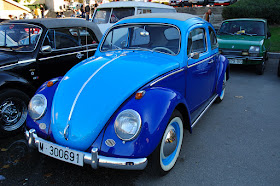![Barcelona Walls Remnants [enlarge]](https://lh3.googleusercontent.com/blogger_img_proxy/AEn0k_ti1aMJ49BHixs3DN9mDLg2YnEltorl1sgl8vx0gtH8CtK0SooOzefwmXvbAqpX_IDyt2WCvKJQd5y1oeSFOmrnq-KjZ3IoUL7ABj3fgMEVZlD3Y28w3QHyEH2C2RB5fTm5VA=s0-d)
The History of Barcelona's City Walls
Barcelona is a city with a long and rich history, and its city walls are a testament to that. The first walls were built in the 3rd century BC, when Barcelona was a Roman colony. These walls were made of stone and earth, and they surrounded the city for about 2 kilometers.
In the 10th century, the Moors conquered Barcelona, and they built new walls around the city. These walls were made of brick, and they were much larger than the Roman walls. They surrounded the city for about 5 kilometers.
In the 13th century, the Christians reconquered Barcelona, and they began to build new walls. These walls were made of stone, and they were even larger than the Moorish walls. They surrounded the city for about 10 kilometers.
The city walls of Barcelona were used for centuries to protect the city from invaders. However, they began to fall into disrepair in the 18th century.
In the 19th century, the walls were finally demolished, and they were replaced by a ring of boulevards.
Today, only a few fragments of the city walls of Barcelona remain. However, these fragments provide a glimpse into the city's rich history.
The Remains of the City Walls
The most significant remains of the city walls of Barcelona are located in the Gothic Quarter. These remains include the Portal del Bisbe, the
Portal de Santa Madrona, and the Torre del Rellotge.
The Portal del Bisbe is a gate that was built in the 14th century. It is one of the most impressive examples of Gothic architecture in Barcelona.
The Portal de Santa Madrona is another gate that was built in the 14th century. It is located near the Plaça del Rei, which is the site of the former royal palace of Barcelona.
The Torre del Rellotge is a tower that was built in the 14th century. It is located in the Plaça de Sant Jaume, which is the main square of Barcelona. The tower was originally used as a watchtower, and it now houses a clock.
In addition to these significant remains, there are also a number of other fragments of the city walls of Barcelona scattered throughout the city. These fragments can be found in parks, gardens, and even in some of the
city's streets.
The Importance of the City Walls
The city walls of Barcelona were an important part of the city's history. They protected the city from invaders for centuries, and they also helped to define the city's borders. The walls were also a symbol of the city's power and prestige.
Today, the remains of the city walls of Barcelona are a reminder of the city's rich history. They are also a popular tourist destination, and they provide a glimpse into the city's past.
![Turtle Holding Pillar at Sagrada Familia [enlarge]](https://farm2.static.flickr.com/1348/1303862803_f282f9428d_o.jpg)
![Agbar Tower [enlarge]](https://farm2.static.flickr.com/1288/1303859119_252189c4e5_o.jpg)
